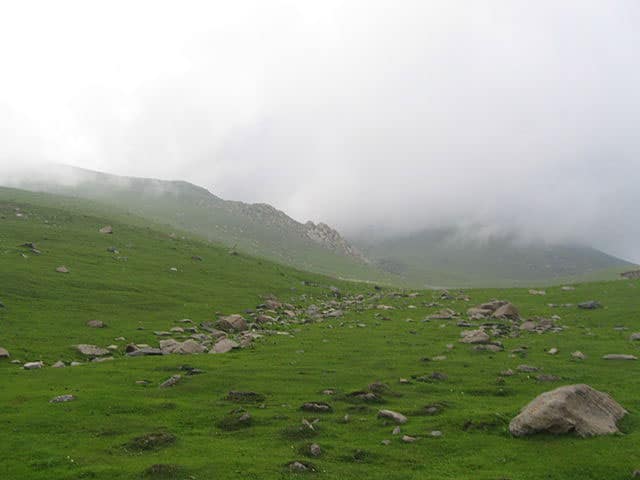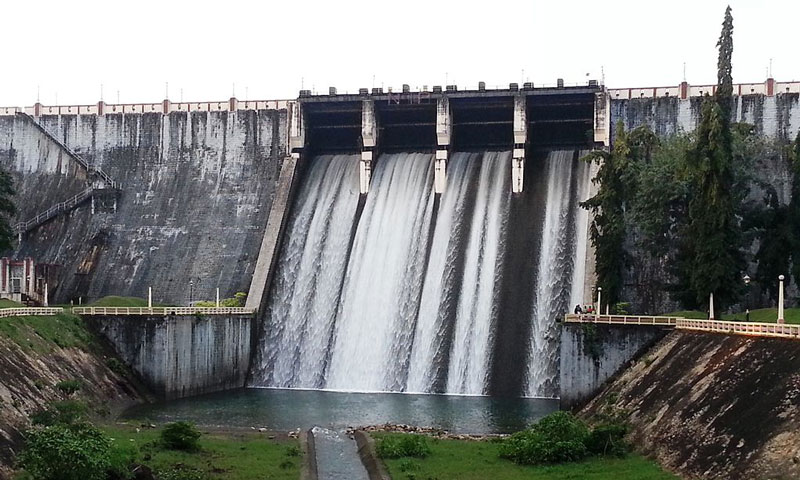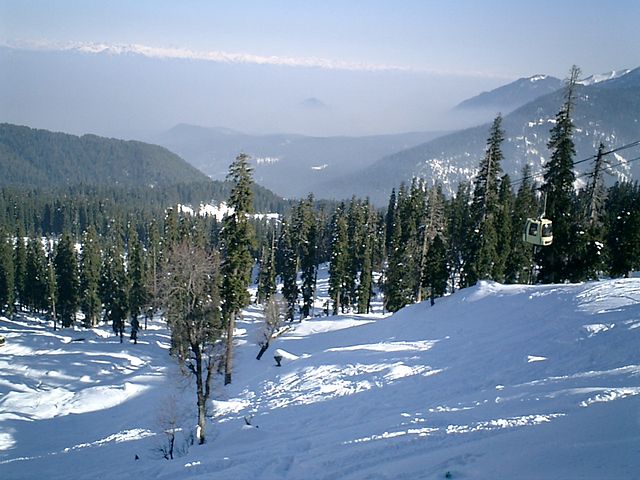Sir George Everest’s House, located in Mussoorie, is a significant historical landmark that holds great importance in the history of geography and mountaineering. Situated amidst the picturesque hills of the Uttarakhand state in northern India, this house was the residence of Sir George Everest, a British surveyor and geographer. Most famously known for the mountain Mount Everest being named after him, Sir George Everest’s legacy has left an indelible mark on both the world of exploration and the field of geography. His house in Mussoorie, a charming hill station, offers visitors a unique insight into the life and times of one of the most prominent figures in geographical history.
Historical Significance of Sir George Everest’s House
The house in Mussoorie, also known as the Everest House, was built in the early 19th century. It was originally the residence of Sir George Everest during his tenure as the Surveyor General of India from 1830 to 1843. Everest served the British government in India for several years, contributing immensely to the surveying of India’s vast terrain. The house was a retreat where he could relax amidst the peaceful atmosphere of the Himalayas, a stark contrast to the demanding nature of his work.
Although Sir George Everest never actually visited the mountain named after him, his work in accurately mapping the Indian subcontinent laid the groundwork for later expeditions that would lead to the discovery of Mount Everest as the highest point on Earth. The naming of the mountain, after his retirement in 1865, remains a tribute to his outstanding contributions to geographical exploration.
Architecture and Design of Sir George Everest’s House
The house itself is a simple yet charming colonial-style bungalow, built in traditional British architectural style. Its design reflects the era’s functional style, incorporating large windows to provide unobstructed views of the surrounding mountains and valleys. Wooden beams, stone floors, and spacious verandas give the house a rustic yet dignified character. The natural beauty of the Mussoorie hills complements the house’s serene ambiance, making it a fitting retreat for someone of Everest’s stature.
The house was built at an elevation that offers breathtaking views of the Doon Valley and the Shivalik Hills, providing the ideal backdrop for a surveyor who was always in need of tranquility and concentration. Over the years, the house has undergone various renovations, but it still retains much of its historical charm, reflecting the period in which Sir George Everest lived and worked.
The Legacy of Sir George Everest
Sir George Everest, born in 1790, played an instrumental role in surveying and mapping the Indian subcontinent. His work helped map the entire Indian territory, which was an essential part of the British Empire’s administrative and military operations. Everest was instrumental in determining the longitude and latitude of key locations across India and also worked on the establishment of the Indian Meridian.
However, Sir George Everest’s most notable contribution was his role in the Great Trigonometric Survey of India. This ambitious project sought to measure the vast distances across the country and map its topography. Sir George Everest’s contribution was so monumental that after his retirement, the peak which was later discovered as the world’s highest mountain was named in his honor, despite the fact that Everest himself had never visited it.
The house in Mussoorie serves as a reminder of his monumental efforts and is now a popular tourist attraction, where visitors can learn about the man who brought much of the unknown geography of India into focus for the world.
Visiting Sir George Everest’s House: What to Expect
Today, Sir George Everest’s House is a museum that offers a glimpse into the life of one of the most revered figures in the history of geography. The house has been carefully preserved and converted into a museum, with many artifacts related to Sir George Everest’s career on display. Visitors can see maps, old surveying instruments, and photographs that highlight his contributions to geographical sciences.
The house also has an exhibition dedicated to the history of Mount Everest and its significance as the highest peak in the world. There are several informative boards and descriptions about the surveys conducted in the 19th century and how Sir George Everest’s name became synonymous with one of the greatest natural wonders on Earth.
Visitors can explore the living quarters of Sir George Everest, view personal items, and learn about his life in India, where he spent a significant portion of his career. The surrounding landscape, including the views of the Himalayas, also plays a major role in showcasing the significance of the location and provides visitors with a serene environment to reflect on the legacy of Sir George Everest.
How to Reach Sir George Everest’s House
Sir George Everest’s House is located approximately 6 km from the main Mussoorie Mall Road. To reach the house, visitors can either opt for a short hike or take a taxi or local transport that travels up to the spot. The route leading to the house is scenic, offering spectacular views of the surrounding mountain ranges and valleys.
The best way to reach the house is by hiring a local taxi, or if you prefer a more adventurous approach, you can take a trek through the beautiful Mussoorie hills, which takes around 30 minutes, offering an immersive experience of the natural beauty of the area.
Timings and Entry Fee
The Sir George Everest House is typically open to the public every day from 10:00 AM to 5:00 PM, except on closed days or holidays. The entry fee is nominal, making it affordable for visitors who wish to delve into the history of Indian exploration and Sir George Everest’s legacy. Some additional fees may apply for photography or guided tours.
Conclusion
Visiting Sir George Everest’s House in Mussoorie is a journey through the history of exploration and the legacy of one of the world’s greatest surveyors. Surrounded by the beauty of the Himalayas, this charming house offers visitors an opportunity to not only explore the life of Sir George Everest but also understand the immense significance of his work in shaping modern geography. It remains a fitting tribute to his pioneering efforts and the incredible mountain that now bears his name.
Frequently Asked Questions (FAQs) about Sir George Everest’s House, Mussoorie
1. What is Sir George Everest’s House?
Sir George Everest’s House is a historical museum and residence located in Mussoorie, India, once home to Sir George Everest, the British surveyor-general of India. It is now a significant landmark where visitors can learn about his contributions to geography and the survey of India, as well as the legacy of Mount Everest.
2. Where is Sir George Everest’s House located?
Sir George Everest’s House is situated around 6 km from the main Mall Road in Mussoorie, Uttarakhand, India. It is located amidst the scenic hills of the Himalayan foothills, offering picturesque views of the surrounding landscapes.
3. What can I see at Sir George Everest’s House?
The house is home to an extensive collection of exhibits, including:
- Historical maps and surveying instruments used by Sir George Everest.
- Personal artifacts from his life and career.
- An exhibition on Mount Everest, showcasing its significance and history.
- Informational displays about the Great Trigonometric Survey of India and other geographical contributions by Sir George Everest.
4. What is the significance of Sir George Everest’s House?
The house is historically significant because it was the residence of Sir George Everest, who played a pivotal role in the surveying and mapping of India. It was during his time that Mount Everest, the highest mountain in the world, was named in his honor. The house serves as a tribute to his legacy in the field of geography and exploration.
5. What are the visiting hours for Sir George Everest’s House?
Sir George Everest’s House is typically open every day from 10:00 AM to 5:00 PM, except on holidays or for special events. It is recommended to check ahead for any changes in timings or closures due to local conditions or special events.
6. Is there an entry fee for visiting Sir George Everest’s House?
Yes, there is an entry fee for visitors to explore Sir George Everest’s House. The fee is usually nominal, making it affordable for most visitors. Additional fees may apply for photography or guided tours. It is advisable to inquire about the specific fees upon arrival.
7. Can I take a guided tour of Sir George Everest’s House?
Yes, guided tours are available at Sir George Everest’s House. These tours provide detailed information about Sir George Everest’s life, his work, and the significance of the house and Mount Everest. It is highly recommended to take a guided tour to enhance the experience.
8. How do I reach Sir George Everest’s House from Mussoorie Mall Road?
Sir George Everest’s House is located about 6 km from Mussoorie Mall Road. Visitors can take a taxi, local transport, or enjoy a scenic walk to the house. The trek to the house takes around 30 minutes and offers stunning views of the surrounding landscapes.
9. Is the house accessible for people with disabilities?
While the house does provide access to visitors, the terrain around the house can be steep and uneven, which may pose challenges for visitors with mobility issues. It is best to check in advance with the staff regarding accessibility arrangements.
10. What is the best time to visit Sir George Everest’s House?
The best time to visit Sir George Everest’s House is during the winter months from October to March, when the weather in Mussoorie is pleasant and ideal for sightseeing. During this period, visitors can enjoy clear views of the Himalayas and the surrounding areas.
11. Can I take photos inside Sir George Everest’s House?
Photography is generally allowed inside Sir George Everest’s House; however, there may be restrictions in certain areas or for specific exhibits. It is advisable to check the rules upon entry or with the museum staff for any photography guidelines.
12. Is there parking available at Sir George Everest’s House?
Yes, parking facilities are available for visitors at Sir George Everest’s House. However, parking can be limited, especially during peak tourist seasons. It is recommended to arrive early or consider alternative transport options.
13. Is Sir George Everest’s House suitable for children?
Yes, Sir George Everest’s House is suitable for children, particularly those with an interest in history, geography, and exploration. The museum offers educational and engaging exhibits that provide children with insights into the world of geography and the importance of Sir George Everest’s contributions.
14. Are there any nearby attractions to visit after exploring Sir George Everest’s House?
After visiting Sir George Everest’s House, tourists can explore nearby attractions such as:
- Kempty Falls – a popular waterfall located around 15 km from Mussoorie.
- Camel’s Back Road – a scenic walking path with panoramic views of the surrounding mountains.
- Gun Hill – one of the highest points in Mussoorie, offering breathtaking views of the Doong Valley and the Shivalik range.
15. Is the house open during festivals or special occasions?
Sir George Everest’s House may have special timings or closures during major festivals or public holidays. It is advisable to check the official website or contact the authorities to confirm whether the museum will be open during your intended visit.






















